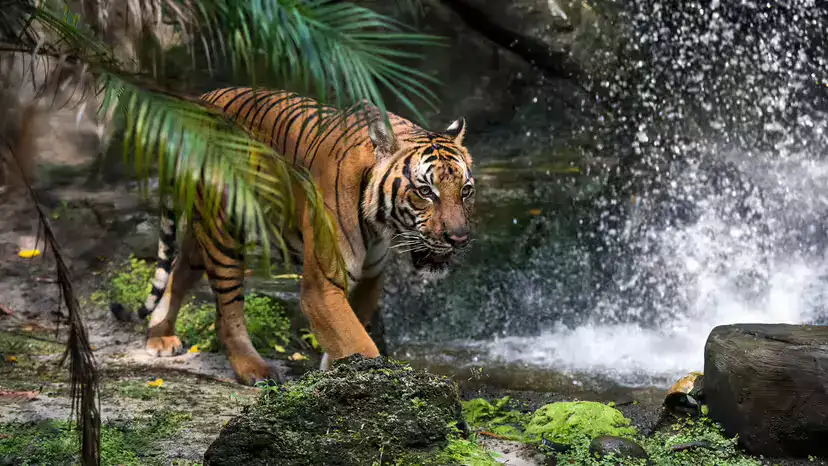Fewer than ~150 Malayan tigers are thought to remain in the wild; the subspecies is Critically Endangered.
Primary pressures: habitat loss and fragmentation, snaring/poaching, and declines in large prey.
What helps: intact, connected rainforests, anti-poaching patrols, smart land-use planning, and community-led stewardship.

Smaller than Bengal or Siberian tigers, the Malayan tiger is adapted to the dense, low-light understory of tropical forests.
Size & build: total length 2.3–2.6 m (7.6–8.5 ft); males ~48–129 kg, females ~24–89 kg.
Coat: rich orange with fine, closely spaced black stripes for deep-shade camouflage.
Lifespan: up to ~20 years in the wild.
Taxonomy: tiger subspecies endemic to Peninsular Malaysia.
Where they live: lowland and hill rainforests, with use of subtropical forest, shrubland, and grassland where cover and prey persist—only in Peninsular Malaysia.
Space needs: solitary cats with large home ranges (tens to hundreds of km² depending on prey density). Connected forest is essential for territory establishment, breeding, and gene flow.
Diet: primarily wild boar, sambar and muntjac deer, bearded pigs, and occasionally smaller game; rare opportunism on young elephant calves is reported.
Habitat loss & fragmentation
Expansion of plantations, roads, and other infrastructure breaks large forests into small, isolated blocks—fewer prey, more edge effects, and higher human access.
Poaching & snaring
Wire snares set for wildlife indiscriminately injure or kill tigers and their prey. Even low poaching rates can collapse a small population.
Prey depletion
Overhunting of deer and wild pigs leaves tigers with too little food to breed successfully.
Human–tiger conflict
Fragmented landscapes increase encounters near livestock and settlements, sometimes leading to retaliatory killing.
Tigers are apex predators that help regulate herbivore numbers. Their presence signals healthy, functional forests that store carbon, secure watersheds, and support countless other species. Protecting the tiger protects the whole ecosystem.
Protect what’s left: secure large, intact forest cores and ecological corridors that link them.
Relentless anti-poaching: intelligence-led patrols, rapid snare removal, strong penalties, and cross-agency enforcement.
Recover prey: curb bushmeat hunting; restore habitats that favor deer and wild pigs.
Roads with wildlife in mind: underpasses/overpasses, fencing at hotspots, and speed enforcement reduce roadkill and barrier effects.
Community partnership: engage local and Indigenous communities in paid patrolling, conflict prevention, and livelihood alternatives.
Monitoring: camera-trapping, genetics, and occupancy modeling to track population trends and target actions.
Don’t buy wildlife products; report suspicious online listings.
Support NGOs funding anti-poaching patrols, snare sweeps, and community ranger programs in Peninsular Malaysia.
If you operate in supply chains tied to the region, adopt deforestation-free sourcing and road-risk mitigation.
Status: Critically Endangered; likely <150 wild individuals.
Strongholds: remaining protected forest landscapes in Peninsular Malaysia.
Biggest threats: habitat fragmentation, snaring/poaching, prey loss.
Conservation priority: protect/restore corridors, scale anti-poaching, rebuild prey base.
What do Malayan tigers mainly eat?
Wild boar and deer are the staples; they’ll also take bearded pigs and smaller game when available.
Why can’t small, isolated forests save them?
Tigers need large territories and a diverse, stable prey base. Small patches can’t sustain enough individuals for long-term genetic or demographic viability.
Are zoos enough to secure the subspecies?
Ex situ programs can be a backup, but wild survival depends on habitat protection, poaching control, and prey recovery in Malaysia.
animal tags: malayan tiger
We created this article in conjunction with AI technology, then made sure it was fact-checked and edited by a Animals Top editor.